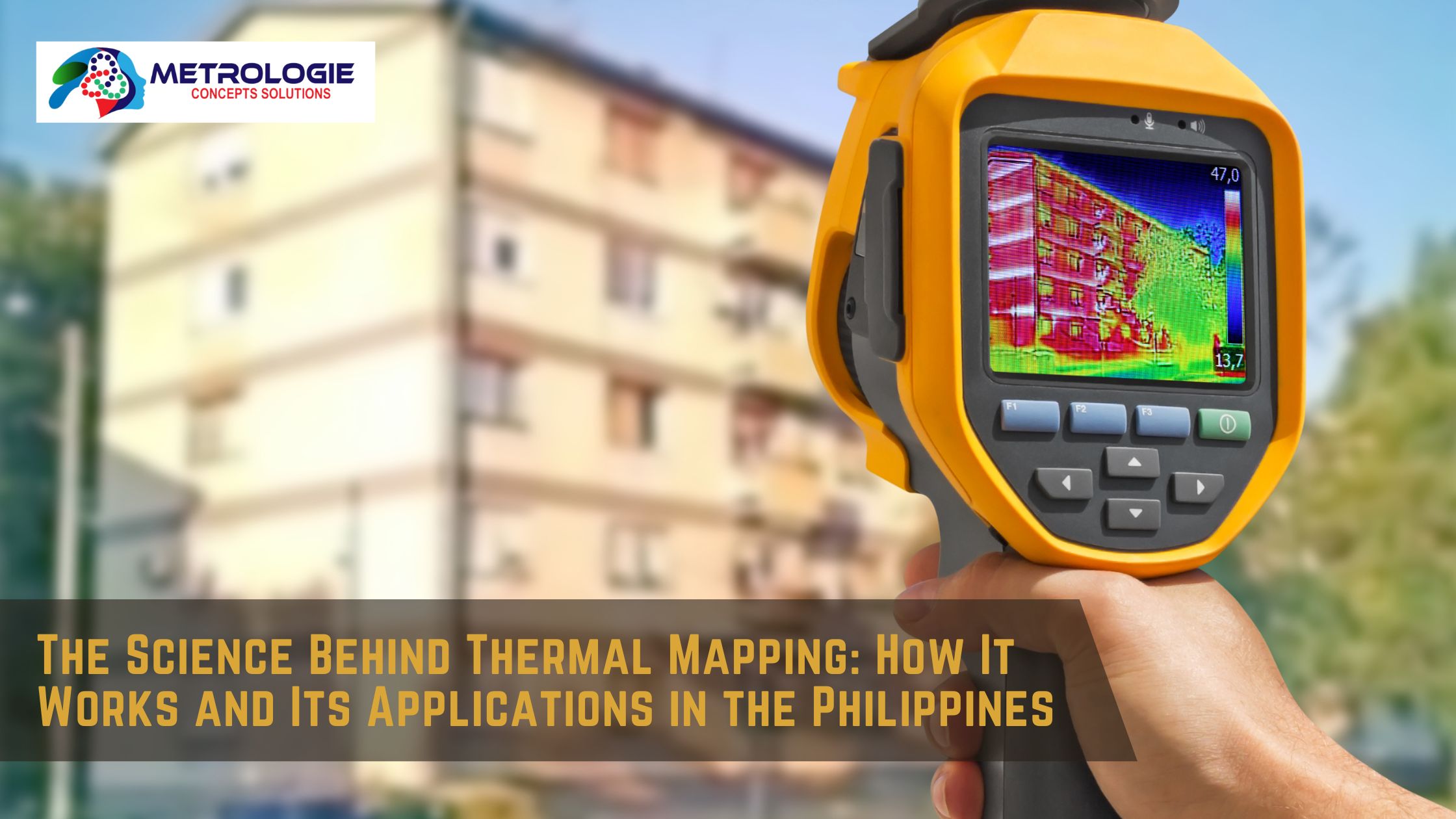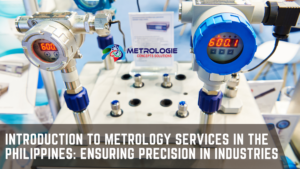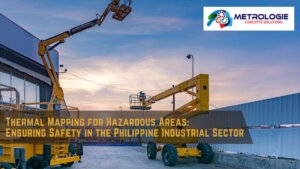Introduction
In industries where temperature plays a critical role in maintaining product integrity—such as pharmaceuticals, food storage, and electronics—thermal mapping is essential. The accuracy of temperature control can make or break product quality, safety, and compliance with industry regulations. But what exactly is thermal mapping, and why is it so important?
Thermal mapping is the process of identifying temperature variations across a space, process, or storage area to ensure consistent environmental conditions. In the Philippines, industries that deal with sensitive materials—like vaccines, food, and electronics—must adhere to strict temperature requirements to maintain product quality and safety. Thermal mapping provides an accurate analysis of temperature distribution, helping companies avoid costly errors that could result from temperature fluctuations.
This article delves into the science behind thermal mapping, explaining how it works and its various applications in the Philippines. We will explore how this technology ensures regulatory compliance and operational efficiency, particularly in the pharmaceutical, food, and electronics industries.
1. What is Thermal Mapping?
Thermal mapping is a process used to identify and monitor temperature variations within a controlled environment. This can include storage areas such as warehouses, refrigerated trucks, freezers, or even entire facilities. It involves placing temperature sensors in strategic locations to measure the temperature distribution over time. The goal is to ensure that there are no areas where temperatures deviate from the required range for safe storage or processing.
Thermal mapping is critical in industries where product quality is highly sensitive to temperature changes. It helps businesses ensure that their storage and transportation conditions comply with industry standards, preventing spoilage, degradation, and product recalls.
2. The Science Behind Thermal Mapping
Thermal mapping relies on the principles of thermodynamics and heat transfer. When applied to controlled environments, thermal mapping involves understanding how heat moves within a space and how temperature changes affect the stored items. To ensure accurate results, thermal mapping uses high-precision equipment like data loggers, temperature sensors, and monitoring software.
a. Key Principles of Thermal Mapping
- Heat Transfer: Understanding how heat transfers through a space is fundamental to thermal mapping. Heat can be transferred through conduction, convection, and radiation. The goal of thermal mapping is to measure how these forms of heat transfer affect different areas of the storage space.
- Temperature Uniformity: A core aspect of thermal mapping is determining whether a storage area maintains uniform temperatures throughout. Temperature fluctuations or “hot spots” could lead to product damage, particularly in temperature-sensitive items like vaccines or frozen food.
- Stability: Thermal mapping is typically conducted over a set period to determine the stability of temperature conditions within the space. Environmental factors, operational cycles, or equipment malfunctions may introduce temperature variations. Regular mapping helps mitigate the risks.
b. How Thermal Mapping Works
The process of thermal mapping generally follows these steps:
- Preparation: A detailed plan is created to outline the mapping procedure. This includes selecting the location, duration of the mapping study, and the number of temperature sensors to be used.
- Sensor Placement: Sensors (or data loggers) are strategically placed throughout the storage area. The placement of these sensors is crucial, as it must account for potential temperature variations in different zones—such as corners, high shelves, or areas near doors.
- Monitoring Period: Once the sensors are in place, the temperature is monitored over a specific period. The length of this period varies depending on the industry and product requirements, but it typically spans 24 hours to several days to capture any temperature fluctuations during operational cycles.
- Data Analysis: After the monitoring period, the data from the sensors are collected and analyzed. The data is used to identify temperature variations, cold spots, and areas where conditions deviate from the optimal range.
- Report Generation: A thermal mapping report is generated based on the collected data, highlighting any discrepancies and areas that require attention. The report is then used to make necessary adjustments to the storage environment or processes.
3. Applications of Thermal Mapping in the Philippines
In the Philippines, where high humidity and fluctuating temperatures are common, thermal mapping is particularly crucial for industries that rely on strict environmental controls. The tropical climate presents unique challenges for temperature-sensitive industries, making thermal mapping an invaluable tool for ensuring product integrity. Below are some of the primary applications of thermal mapping across different sectors in the country.
a. Pharmaceutical Industry
The pharmaceutical industry in the Philippines is governed by stringent regulatory standards, particularly concerning the storage and transportation of temperature-sensitive drugs and vaccines. Thermal mapping ensures that storage areas maintain the correct temperature and humidity levels to preserve the efficacy of medications.
- Vaccine Storage: Vaccines must be stored within a specific temperature range to remain effective. Any deviation can render them useless, leading to wasted resources and potentially harmful public health outcomes. Thermal mapping helps identify any areas where vaccines may be exposed to temperature fluctuations.
- Cold Chain Logistics: The cold chain refers to the temperature-controlled supply chain that is vital for the transportation of pharmaceuticals. Thermal mapping ensures that these cold chain logistics systems operate within the required temperature parameters from production to end delivery.
b. Food and Beverage Industry
In the Philippines, the food industry relies heavily on thermal mapping to ensure food safety during storage and transportation. Given the country’s hot and humid climate, temperature control is vital to preventing food spoilage, contamination, and ensuring compliance with food safety regulations.
- Frozen Food Storage: For frozen foods like seafood, meats, and prepared meals, any interruption in freezing conditions can cause spoilage, bacteria growth, or loss of product integrity. Thermal mapping ensures that freezing units maintain consistent temperatures throughout the entire storage space.
- Refrigerated Transportation: Similar to the pharmaceutical industry, the food industry also relies on cold chain logistics to maintain food quality. Thermal mapping is used to monitor temperature fluctuations during transportation, ensuring that perishable goods remain safe for consumption upon arrival.
c. Electronics Industry
The electronics industry in the Philippines is rapidly growing, with manufacturing hubs producing temperature-sensitive components like semiconductors and circuit boards. For these components, precise environmental control is required during both storage and production to prevent damage.
- Component Storage: Electronics manufacturers use thermal mapping to monitor the conditions in storage areas where temperature fluctuations could lead to damage, oxidation, or failure of sensitive components.
- Clean Rooms: In facilities where electronic components are manufactured, temperature, humidity, and cleanliness must be controlled rigorously. Thermal mapping ensures that clean rooms maintain the precise environmental conditions needed for the production of high-quality electronic devices.
4. Benefits of Thermal Mapping
Thermal mapping offers numerous benefits to industries in the Philippines, from ensuring product integrity to complying with regulatory standards. Here are some of the key advantages:
a. Ensures Compliance with Regulatory Standards
Thermal mapping is essential for industries subject to strict regulatory standards. For example, the World Health Organization (WHO) and Good Manufacturing Practice (GMP) guidelines require companies in the pharmaceutical and food industries to maintain precise temperature control. Thermal mapping ensures that businesses comply with these guidelines, avoiding potential fines, product recalls, or legal issues.
b. Prevents Product Loss and Waste
One of the primary advantages of thermal mapping is its ability to prevent product loss due to temperature fluctuations. For businesses dealing with perishable goods or temperature-sensitive products, even a slight deviation from the required temperature range can lead to spoilage or product degradation. Thermal mapping helps businesses identify problem areas and take corrective action before product loss occurs.
c. Increases Operational Efficiency
By identifying temperature variations within storage or transportation environments, thermal mapping enables businesses to optimize their processes. For example, thermal mapping can highlight inefficiencies in refrigeration systems or pinpoint areas that require additional insulation. Addressing these issues can lead to energy savings and reduce the risk of costly downtime due to equipment failure.
d. Provides Peace of Mind
For industries that deal with temperature-sensitive products, thermal mapping provides peace of mind by ensuring that products are stored or transported under the right conditions. With detailed reports and real-time data, businesses can be confident that their products are safe and compliant with industry standards.
5. How to Prepare for Thermal Mapping in the Philippines
To get the most out of thermal mapping, businesses need to prepare adequately. Here are a few steps to ensure a successful thermal mapping process:
a. Understand Industry Requirements
Different industries have varying requirements for thermal mapping. For example, pharmaceuticals may require more frequent mapping compared to food storage. It’s essential to understand your industry’s standards and regulations to ensure compliance.
b. Plan for Sensor Placement
The placement of sensors is crucial for accurate thermal mapping. Collaborate with thermal mapping experts to identify key areas in your storage space that require monitoring. This includes high shelves, corners, and areas near entry points, where temperature fluctuations are more likely to occur.
c. Set a Monitoring Period
The duration of the thermal mapping process will depend on your specific needs. In some cases, you may only need to monitor the temperature for 24 hours, while in others, a longer monitoring period may be required to capture temperature fluctuations during different operational cycles.
d. Analyze the Data
Once the thermal mapping process is complete, it’s important to analyze the data carefully. Work with experts to identify any problem areas and take corrective action if necessary.
6. Partnering with Thermal Mapping Experts in the Philippines
When it comes to thermal mapping, it’s crucial to work with experts who understand the unique challenges of the Philippines’ climate and industry requirements. Premier Physic Metrologie is a leading provider of thermal mapping services in the Philippines, offering tailored solutions for industries such as pharmaceuticals, food, and electronics. With a team of skilled professionals and state-of-the-art equipment, Premier Physic Metrologie ensures that your thermal mapping needs are met with precision and accuracy.
Conclusion
Thermal mapping is a vital tool for industries in the Philippines that rely on temperature control to maintain product integrity and regulatory compliance. From pharmaceuticals to food storage and electronics manufacturing, thermal mapping ensures that products remain safe and effective throughout their lifecycle.
By understanding the science behind thermal mapping and its applications, businesses can take proactive measures to protect their products, improve operational efficiency, and ensure compliance with industry standards. For those looking to optimize their temperature control processes, partnering with a reputable provider like Premier Physic Metrologie is essential.
Invest in thermal mapping today to safeguard your business and maintain product integrity in the competitive Philippine market.




